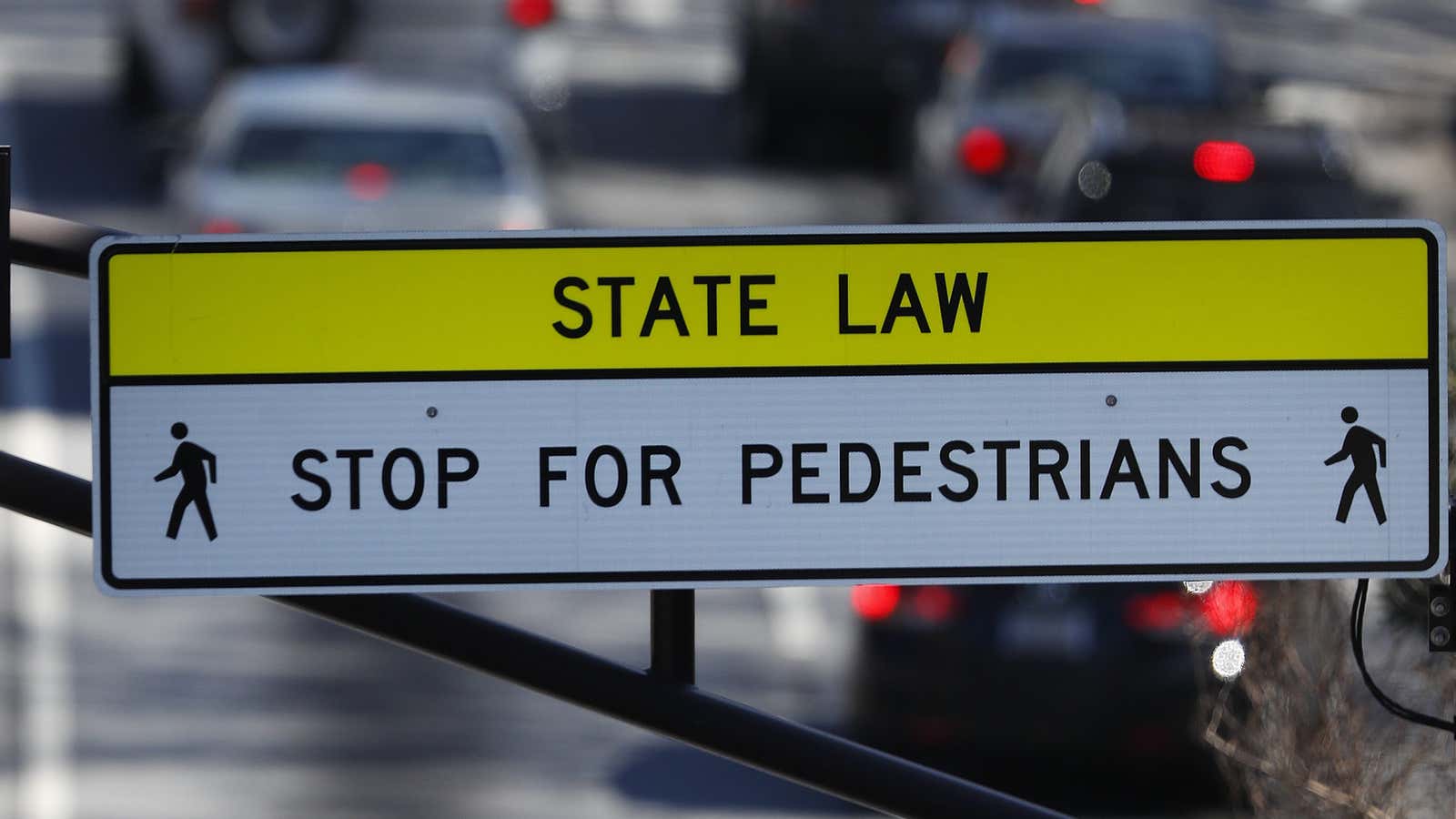The German federal government will adopt new guidelines for self-driving cars inside the country, which will prioritize the value and equality of human life over damage to property or animals.
These guidelines, presented on Aug. 23 by an ethics committee on automated driving, stress that self-driving cars must do the least amount of harm if put into a situation where hitting a human is unavoidable, and cannot discriminate based on age, gender, race, disability, or any other observable factors. In other words, all self-driving cars must be programmed to understand that human life is equal.
This question of who a vehicle should kill when placed in a situation where every outcome would end in death is often called the “Trolley problem.” It’s an ethical debate that’s lasted more than 60 years: Ethicists riddle each other with questions of whether it’s excusable to kill two elderly people to save one child, or save a pregnant woman while killing a man and a child, and on and on. MIT even made a game to test your own ethical predisposition in the situation.
Germany’s rules undercut the myriad arguments possible when weighing the potential of ending one life instead of another based on circumstances of birth. A self-driving car in Germany would choose to hit whichever person it determines it would hurt less, no matter age, race, or gender. How a car would determine the damage it would cause, however, remains uncertain.
Regardless, the country expects a net benefit from the technology; the ethics committee stated that a robot vehicle system would decrease human-caused accidents country-wide, and is thus ethically necessary.
Implementing these rules before fully autonomous cars are on the road puts Germany ahead of the rest of the world, especially the US. While the US Congress is hopeful that bipartisan guidelines can be achieved in the near future (without a defined timeline), individual states like California and Nevada have began drafting their own set of rules, setting the stage for a confusing patchwork of regulation.
